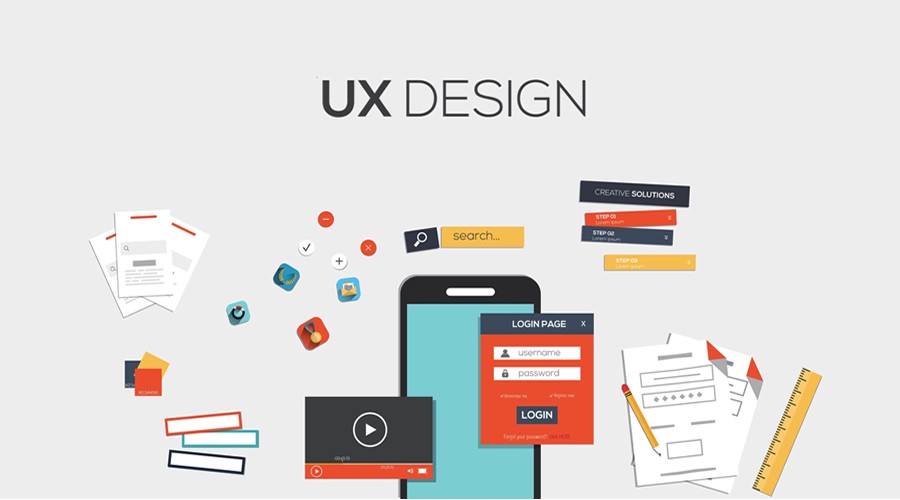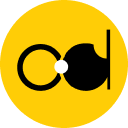In today’s digital era, the landscape of UX design jobs is undergoing a significant transformation with the burgeoning trend of remote work. This shift aligns with the growing inclination towards digital nomadism among UX professionals, fundamentally altering the dynamics of the industry. As businesses globally pivot to digital platforms, the demand for remote UX design jobs is skyrocketing, ushering in an era of unprecedented flexibility and new professional challenges.
 Remote work in UX design, although not an entirely new concept, has gained considerable traction in recent years, particularly in the realm of remote UX design jobs. Esteemed pioneers such as Don Norman and Jakob Nielsen have long been advocates of remote work, laying the foundation for its acceptance within the UX community, including those pursuing remote UX design jobs. The decade of the 2010s marked a significant turning point, with remote work becoming a standard practice in UX design, driven by several critical factors:
Remote work in UX design, although not an entirely new concept, has gained considerable traction in recent years, particularly in the realm of remote UX design jobs. Esteemed pioneers such as Don Norman and Jakob Nielsen have long been advocates of remote work, laying the foundation for its acceptance within the UX community, including those pursuing remote UX design jobs. The decade of the 2010s marked a significant turning point, with remote work becoming a standard practice in UX design, driven by several critical factors:


The Evolution of Remote UX Design Jobs
 Remote work in UX design, although not an entirely new concept, has gained considerable traction in recent years, particularly in the realm of remote UX design jobs. Esteemed pioneers such as Don Norman and Jakob Nielsen have long been advocates of remote work, laying the foundation for its acceptance within the UX community, including those pursuing remote UX design jobs. The decade of the 2010s marked a significant turning point, with remote work becoming a standard practice in UX design, driven by several critical factors:
Remote work in UX design, although not an entirely new concept, has gained considerable traction in recent years, particularly in the realm of remote UX design jobs. Esteemed pioneers such as Don Norman and Jakob Nielsen have long been advocates of remote work, laying the foundation for its acceptance within the UX community, including those pursuing remote UX design jobs. The decade of the 2010s marked a significant turning point, with remote work becoming a standard practice in UX design, driven by several critical factors:
1. The Emergence of the Gig Economy and Freelancing
The gig economy’s expansion has been a notable development in the UX field. According to a report by Upwork, the largest online platform for freelancers, the number of freelance UX designers increased by 66% from 2014 to 2019.. This increase highlights a global trend towards more flexible and independent working models in UX design.2. Advancements in Technology Facilitating Remote Work
Technological progress, especially in cloud computing and online collaboration tools, has revolutionized the remote UX design process. Essential tools like Figma, Sketch, and InVision have become vital for remote UX designers, enabling effortless design creation, sharing, and team collaboration.3. Increasing Demand for Skilled UX Designers
As the role of UX design becomes more crucial in the development of products and services, the demand for skilled UX designers has surged. However, due to a shortage of qualified professionals in certain regions, companies are turning to remote UX talent, thereby expanding the range of available skills and perspectives.Embracing Opportunities in Remote UX Design
The shift towards remote work in UX design brings a host of opportunities:
- Flexibility and Autonomy: Remote work allows UX designers to exercise greater control over their work environments and schedules, enhancing creativity and job satisfaction.
- Diversity and Inclusion: Remote UX design facilitates collaboration with individuals from diverse cultural backgrounds, enriching the design experience and fostering empathy.
- Cost-Effectiveness and Environmental Benefits: Remote work reduces the necessity for commuting and office space, contributing to personal savings and ecological sustainability.
- Ongoing Professional Development: Access to an extensive array of online resources, platforms, and communities supports continual skill improvement and networking.
Strategies for Maximizing Remote UX Design Potential
- Customizing Work Environments: Adapt your workspace to fit personal preferences while maintaining a balance between professional duties and personal well-being.
- Promoting Diversity and Inclusivity: Actively engage with and learn from the variedexperiences of team members and clients.
- Utilizing Digital Tools Effectively: Employ digital solutions for efficient work practices and adopt eco-friendly approaches.
- Investing in Continuous Learning: Explore online learning platforms and professional networks to broaden your skills and connections in the industry.
Key Skills and Tools for Remote UX Designers

1. Excellence in Communication
For remote UX designers, proficiency in transparent, succinct, and empathetic communication is imperative across diverse platforms such as emails, chats, and video conferencing. Tailoring communication styles to suit varied audiences and ensuring active, engaging dialogue is essential.2. Mastery in Time Management
Possessing robust time management skills, including effective prioritization of tasks and adhering to deadlines, is crucial for remote UX designers. Balancing professional responsibilities and personal life, while minimizing distractions, is key to sustaining productivity.3. Capability in Problem-Solving
Remote UX designers are expected to demonstrate formidable problem-solving abilities, integrating creative thinking, analytical skills, and resilience. Proficiency in both independent and collaborative problem-solving, through research, concept development, and testing, is necessary.4. Expertise in Prototyping and Wireframing
For remote UX designers, familiarity with tools such as Figma, Sketch, InVision, and Adobe XD is vital. These tools are essential for facilitating online collaboration and creating prototypes and wireframes, offering functionalities like cloud-based storage and instant feedback.5. Skills in Visual Design and Software
Proficiency in software like Photoshop, Illustrator, and Adobe XD is crucial for designing and refining visual elements, ensuring the aesthetic appeal and user-friendliness of products.6. User Research and Testing Proficiency
Utilizing tools like UserTesting, UsabilityHub, and Hotjar is critical for remote UX designers to conduct effective online user research and testing. These tools enable designers to efficiently gather user feedback, utilizing features such as video recording, eye tracking, and heatmaps.Career in Remote UX Design
Embarking on a career in remote UX design involves a combination of traditional UX skills and remote-specific abilities. Here’s a concise guide:
1. Learning the Fundamentals of UX Design
Delve into the fundamentals of UX design through a variety of online resources, including blogs, podcasts, and video tutorials. Familiarize yourself with key concepts like user research, prototyping, and usability.2. Enrolling in Comprehensive UX Courses
Opt for well-regarded online UX courses that provide in-depth instruction, mentorship, and opportunities for portfolio development. Consider programs from institutions like CareerFoundry, Designlab, and Interaction Design Foundation.3. Gaining Practical Experience
Acquire hands-on experience by undertaking real or simulated projects, such as website redesigns or app development. Use platforms like UXfolio or Balsamiq to hone your skills and display your work.4. Acquiring Essential Tools
Become adept with key remote UX tools necessary for design, communication, and collaboration, including Figma, Sketch, Adobe XD, Slack, and Zoom.5. Crafting an Impressive UX Portfolio
Develop a portfolio that showcases your UX design skills and methodologies effectively. Ensure it’s optimized for online viewing and use platforms like Behance or Dribbble for presentation.6. Networking in the UX Community
Engage with other designers via online platforms and communities, such as LinkedIn, Meetup, and UX Design Community. Networking is crucial for discovering opportunities, learning, and getting feedback.Future Trends in Remote UX Design





